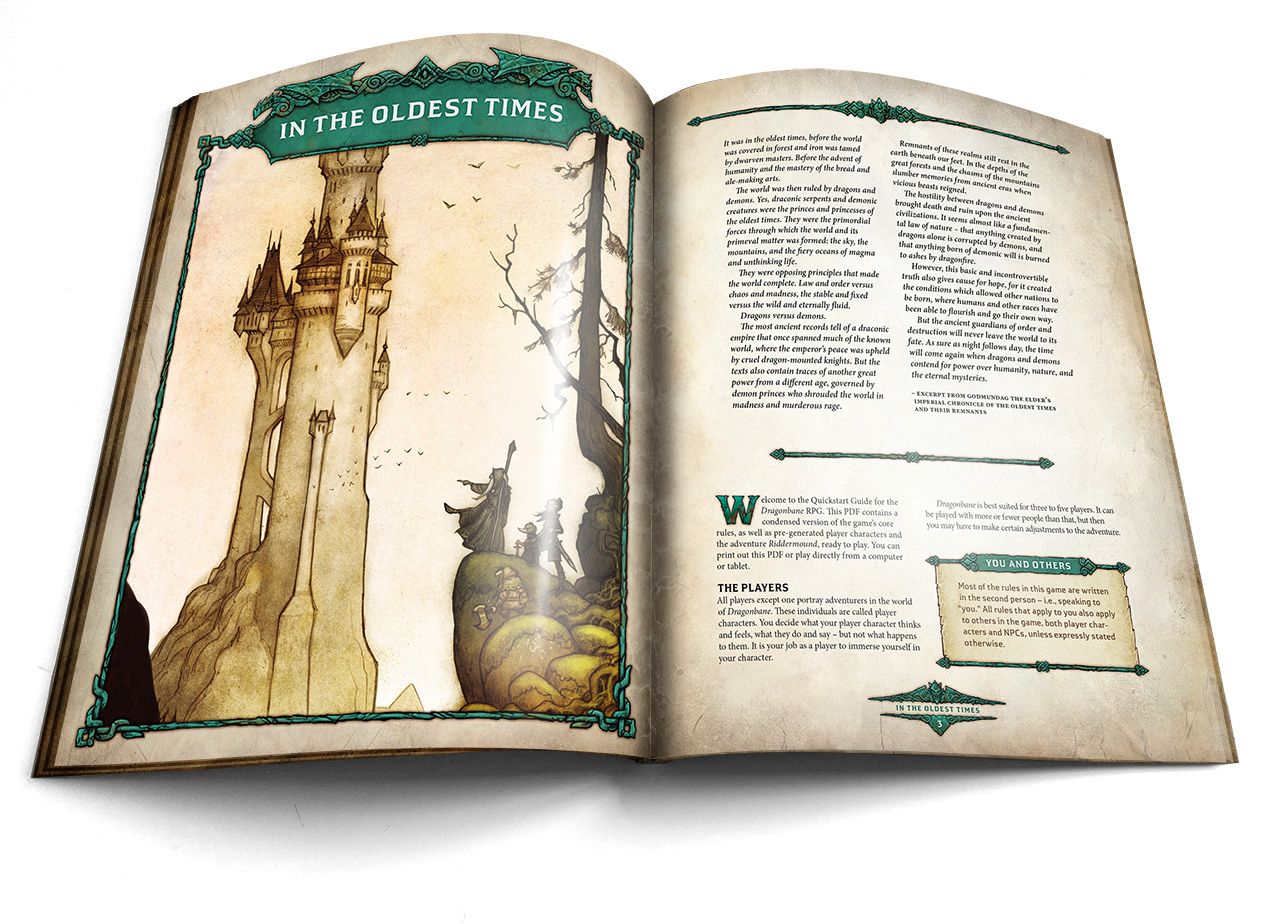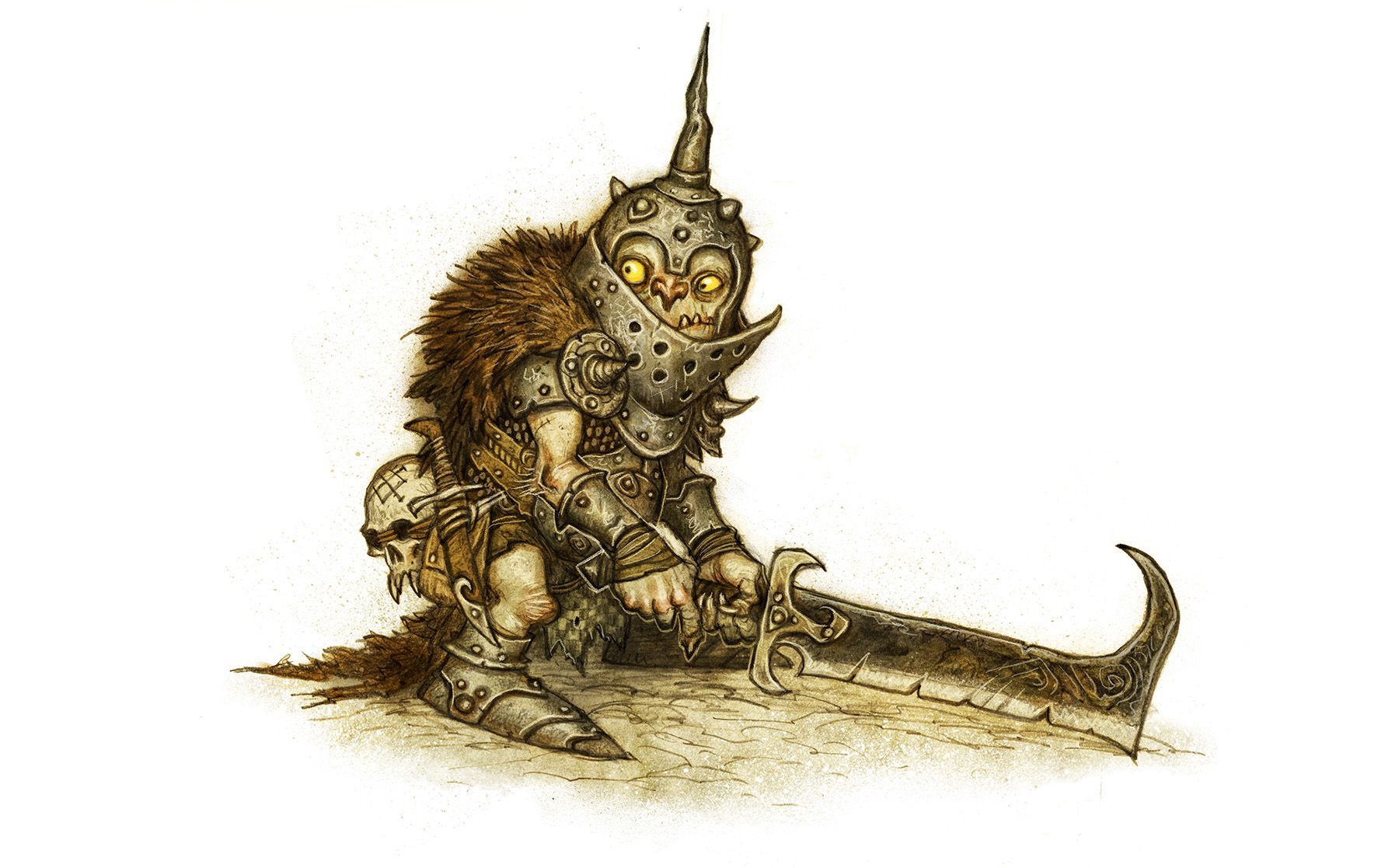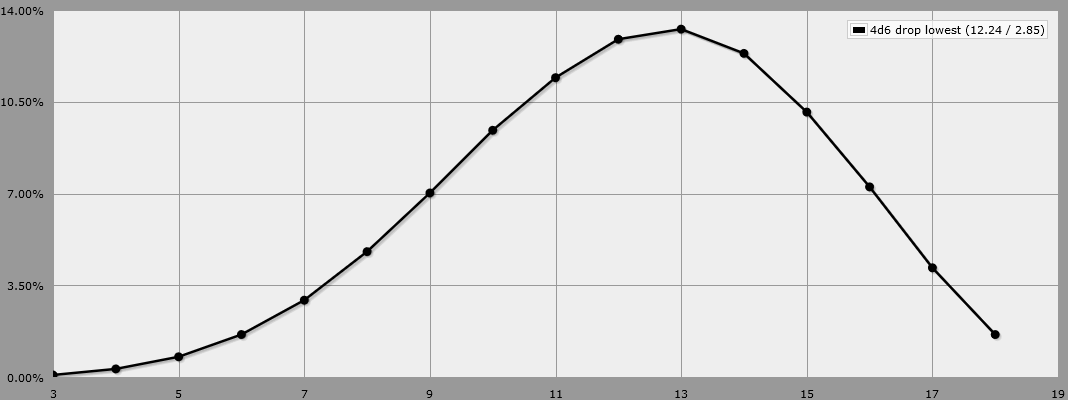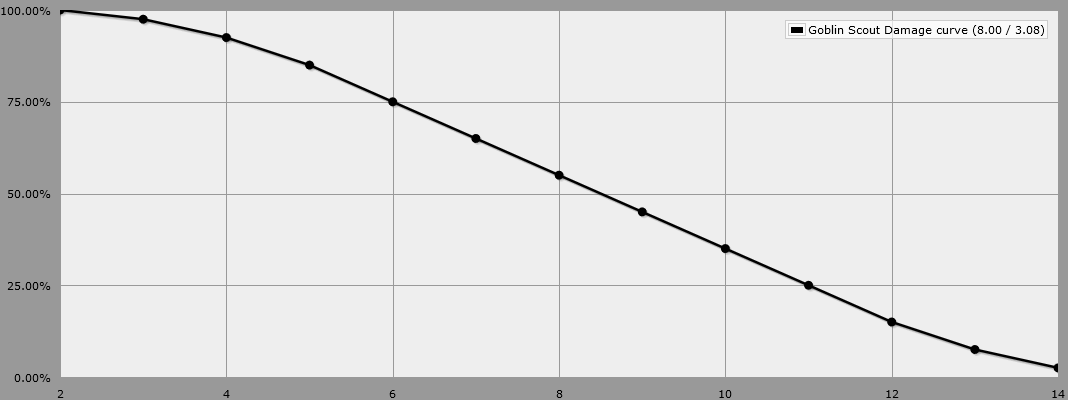
Oneshot Aftermath: Dragonbane
I’ve been running TTRPGs for over a decade now, I think I have heard just about every possible kind of excuse for sudden game attendance drops. Some of my favorites have been:
- I think I’m going to get laid tonight.
- I forgot that I needed to go to Scotland tonight.
- I’m stuck at home because my car is surrounded by a pack of stray dogs.
Somehow these always come at times when the game can’t afford to have that character missing. But alas, if you want your games to have a multi-year resilience, you learn that you have to plod on and run something, anything, oh gods, what is selling well at DriveThruRPG today, and can I pound the whole rulebook in less than 24 hours?
And that’s generally how my group gets to its occasional oneshots, and today’s game, Dragonbane by Free League Publishing.
Just a warning: I’m mostly going to reflect on the system, how I think the it plays, what changes I would make if I played it again, and how I feel about the system, rather than the contents of the one-shot as I prefer to leave those stories for the players to tell. Expect some rambling.

The Guts
Dragonbane is probably better known abroad by its native Swedish title Drakar och Demoner, where it originates as a port of Basic Roleplay’s (BRP) Magic World. Of course, Dragonbane is a D20 system, and Basic Roleplay is a famously a d100 system, so six subsequent editions have obviously been a helluva drug and it’s something very different now.
This system is a D20, roll-under system with the standard battery of fantasy stats and a slightly modified Advantage and Disadvantage mechanic (roll double d20s) called “Boons” and “Banes”. This would make it a happy OSR-alike so far, but there is a couple other things here that may turn off an OSR gamemaster (GM) and make this a more modern D&D-esque game.
As an example: Players have a list of 30 skills, some of which could probably use a bit of hacking down. If your character wants to eat in the wilds, they will need to navigate using their Bushcraft, find an animal using Hunting & Fishing, Decide if they want to learn more about the animal with Beast Lore, kill it using Bows, and then finally cook it up with another round of Bushcraft, because I guess we were running out of room for skills on the character sheet and couldn’t add a Cooking skill.
The innovations on the D20 formula are small, but interesting. Damage bonuses are calculated with die instead of a straight value (your axe might have a d4 strength bonus). “Heroic Abilities” (feats), kin-abilities, and spells almost all utilize the same Willpower resource that is recovered with second-wind style mechanics. Getting these abilities is not straight forward, but not in a bad way. Skill advancement is chance-based. If you roll a 1/20 with a skill or are able to answer yes to a set of questions, the player can roll to advance their skills. This is fun if you’re OK with uneven character advancement.
However, it rankles me that Heroic Abilities are so damn hard to get - A character gets them when they max out a skill, or when the GM feels that the character has done a “Grand Heroic Deed”. Thankfully the GM accepts food-bribes at my table. I’d prefer to dispense with that kind of arbitrariness.
There quite a few other little nice details about this system, but going over them all would probably be tiresome. Just know that there is a lot of modern game polishes here with great production value, and I think what you have in the core rulebook is a clean, solid slimmed down d20 fantasy game that will be appreciated by those who like games like Barbarians of Lemuria and other games of that crunch-level. …And that’s going to be my prefix before I rip into this thing.

The Problem
Oh man, is this game’s combat brutal in parts.
Remember how I said that Heroic Abilities are only gained by either GM fiat or maxing a skill? Well, Heroic Abilities are also the only way to gain HP during advancement and only in small slivers each time you take it. Hopefully you rolled well on Constitution, because that’s the value you realistically have for the rest of the campaign.
Haters of the D&D HP sponge are probably cheering, and I get that - but also this is paired by monsters who can do a crapload of damage. Your lowest level goblin has the potential to do 14 points (d10 + 1d4) of Damage (actually 24 if they critically hit) in a single round, which means that the players are going to have to treat every mook and minion like a harbinger of Doom no matter how far they advance.
The Quickstart adventure (Riddermount) for reference, is a small dungeon-crawl containing potentially multiple encounters with N+2 goblins, and 3 possible boss-level monsters. This is not a combat light game. In the custom oneshot I created for the players, the players acted smart and stacked the odds in their favor, but still got so brutalized in in the first two combats that they flat out avoided every other encounter. This turned what was supposed to be an exciting exploration of a 5-room dungeon into an exercise of soiled-pants diplomacy and skulking. We still had fun, but it was not really what the I or the players expected or wanted when they built their characters for combat.
Players do have ways of defending themselves. Dodging and parrying to negate an attack are a thing, but reactions aren’t given space in the action economy. If a Player dodges, that is their action in the round and they are done. Heroic Abilities can supplement this, but they are again pretty valuable and means someone has to be pigeonholed as a tank who doesn’t get to do much in combat but be the designated whipping boy, as you have to choose beforehand whether you are going to dodge / parry.
Beyond that, I am not sure it’s intentional. The bleedout rules are very generous and rapid healing exists.
On Your Own
None of this is really well communicated.
Dragonbane clocks in at about 116 pages, which was good for me, but means you’re getting a mostly mechanical affair. Do not expect a ton of advice or hand-holding, or much in the way of inspiration beyond a few nice random generation tables. There is about one page of setting lore (if you can call it that), and about 3-4 pages of general campaign structure and advice.
That makes this a toolbox game rather than a complete package. As a result, I think that despite being a lighter ruleset, this is probably best thought of as a game for a group of experienced gamers. I guess I wish that there was more setting information beyond “Dark forests, some grand struggle between demons and dragons, and duck people. Figure it out, Poindexter”, or barring that, just removing the hints to truly let us figure it out as a generalist system.
Adjustments

You should probably expect your players to have about ~13HP, as it maps 1-to-1 with Constitution.
I should reiterate I think there’s actually a good game here, despite some of my annoyance at being caught off guard. That said, here are some changes I’d consider making if I ran this ruleset again.
Ditch the initiative system. Initiative is a 1-10 card-draw every round. I generally hate clever and shifting initiative mechanics, as I believe they create extra complexity for little gain. Card-draws are also a pain to implement in VTTs. Just role a D10 + agility bonus die and be done with it.
Give every player the effect of Defensive for free. If a game has a feat or ability that every player believes they should spend their first advance on, just give it to them. Then the players have a free dodge reaction every round.
- Alternatively, move the choice for a dodge action to after the monster has rolled. Change up how Riposting works to compensate for this.
Players get a Heroic Ability at the end of an adventure, regardless of how “Heroic” the GM feels they were.
Maybe, just maybe, not give the weakest monsters a
1d10+1d4damage.
Consider implementing some D&D 4E style 1HP monsters. This is a way you can really achieve the “Mirth and Mayhem” style they’re after and help alleviate the player’s lack of confidence.
Conclusion
I think I often come across as too negative. I did enjoy Dragonbane, and it’s always pretty cool to see non-anglo products making their way over. I think this is a pretty decent one. In the D&D category, I don’t think it’ll replace my old standbys of Dungeon Crawl Classics or 13th Age, but I do think I would consider this before D&D 5E and Shadow of the Demon Lord.
If you’re an experienced GM who wants a simpler 5E with some old-school touches, I would pick this up and play a game to decide for yourself.
Postscript: This oneshot was set up on an extremely short time-line. There’s a high chance I misinterpreted or misunderstood some rules. Leave this report with a bit of salt just in case.